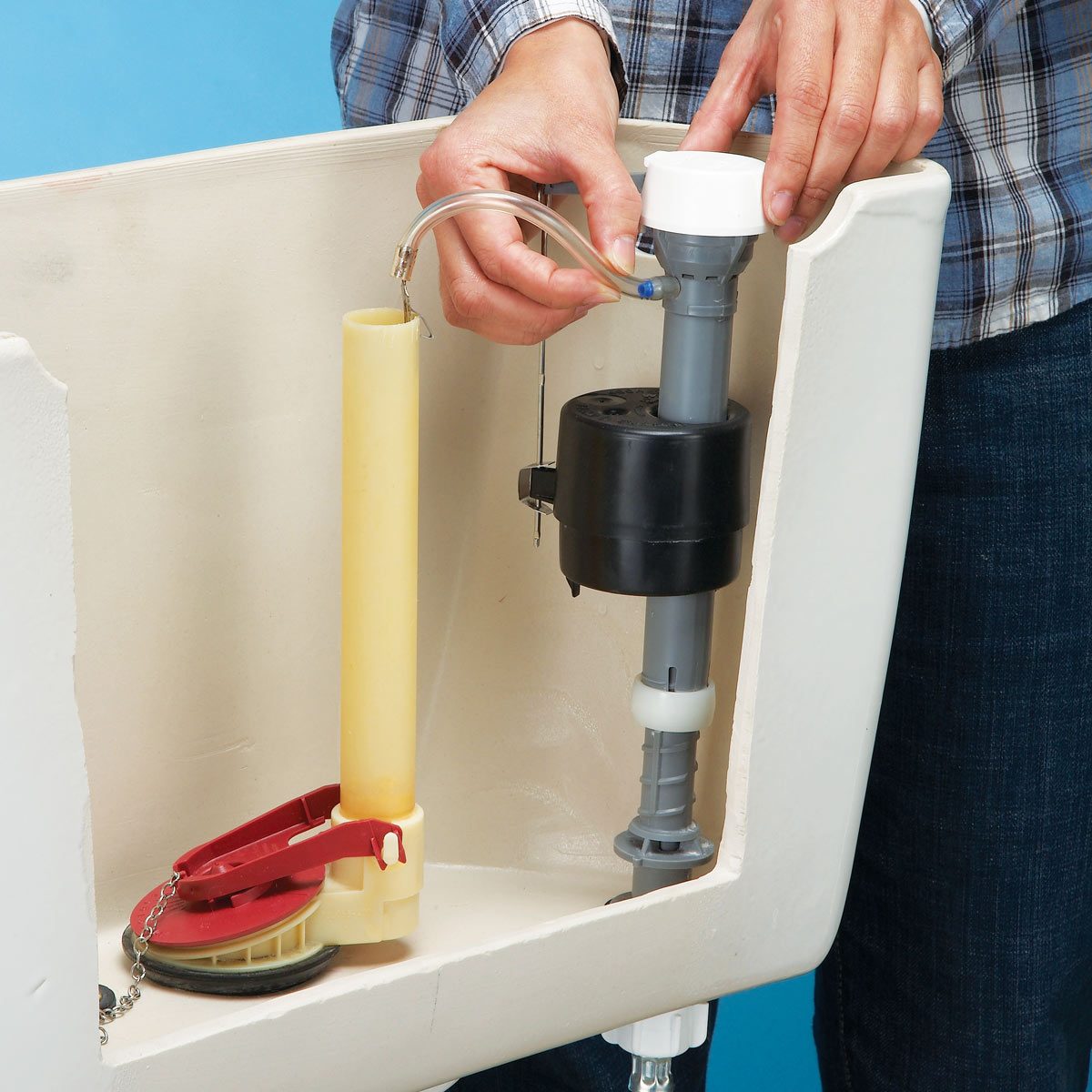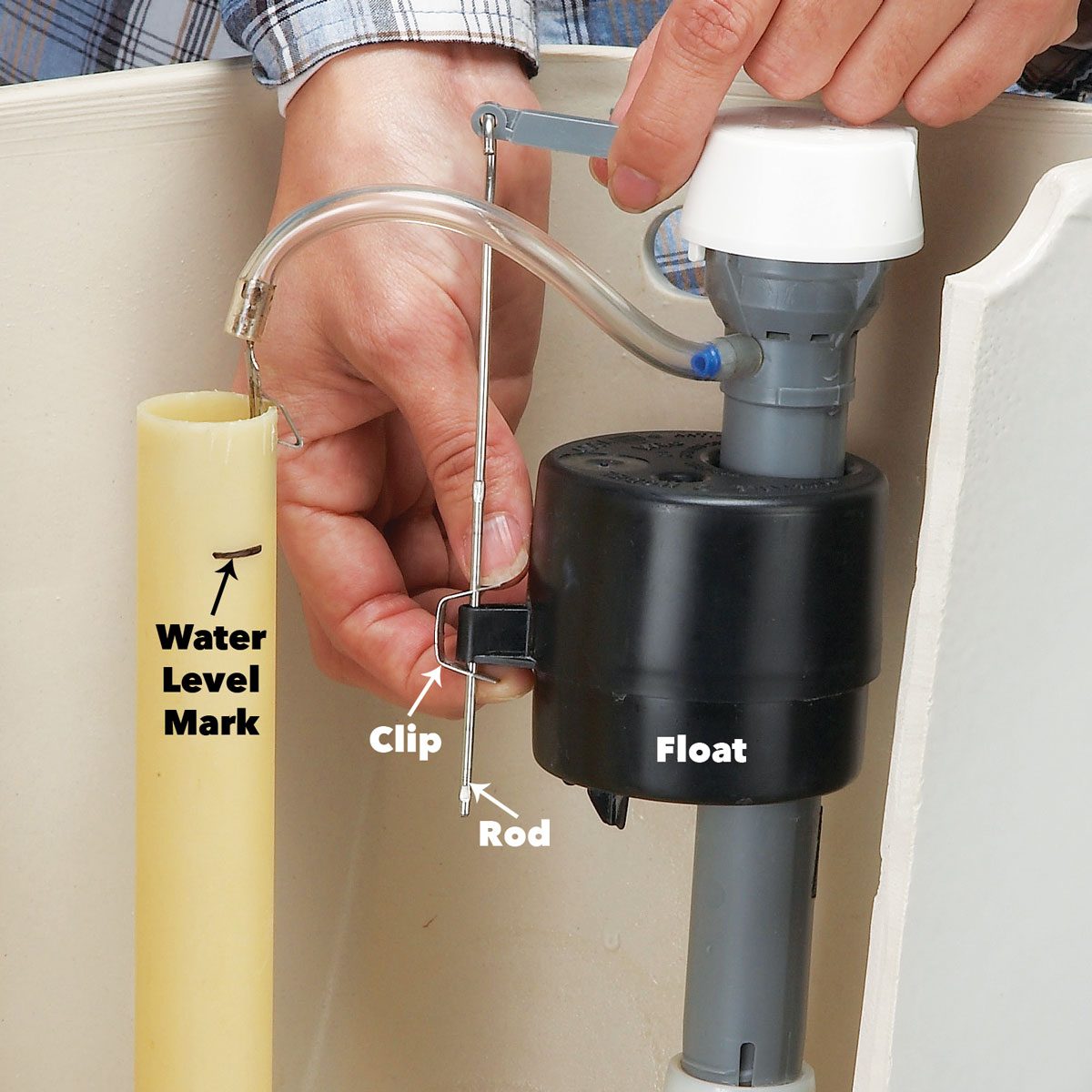Identifying the Source of the Leak

So, your toilet’s running like a marathon, huh? It’s like it’s trying to win a “Most Water Wasting” award. Before you start pulling out the wrench and feeling like a plumber, we need to find the culprit! Let’s dive into the mystery of the leaky toilet.
Toilet Tank Components
The toilet tank is like the control center for your bathroom throne. It holds the water that flushes the system, and there are a few key players that can cause leaks. Knowing these components can help you diagnose the problem faster.
- Fill Valve: This is the water-in valve that controls how much water fills the tank. Think of it as the toilet’s water intake. It’s usually located in the back of the tank.
- Flapper: This rubber seal sits at the bottom of the tank, preventing water from flowing into the bowl until you flush. It’s like a tiny dam holding back the water.
- Overflow Tube: This tube sits in the tank, preventing the water level from rising too high. It acts as a safety valve, making sure the tank doesn’t overflow.
Signs of a Leaking Fill Valve
A leaky fill valve can be a sneaky problem. You might not even notice it at first, but there are telltale signs:
- Constant Running Water: The most obvious sign is the toilet constantly making a “whoosh” sound as water fills the tank. It’s like the toilet is constantly trying to top off its water supply.
- High Water Level: If the water level in the tank is consistently higher than normal, it could indicate a faulty fill valve.
- Water Dripping from the Fill Valve: This is a more obvious sign of a leaking fill valve. You might see water dripping from the valve itself or the pipe connected to it.
Signs of a Leaking Flapper, Bathroom toilet water keeps running
The flapper is the silent hero of the toilet tank, but it can also be the source of leaks. Look for these clues:
- Water Running Constantly: Similar to a leaky fill valve, a worn-out flapper can cause the toilet to run continuously. The flapper might not be sealing properly, allowing water to flow into the bowl even when it’s not flushed.
- Water Level Dropping Slowly: If the water level in the tank slowly drops after a flush, it could mean the flapper isn’t sealing properly.
- Water Dripping from the Bowl: You might hear a gentle dripping sound from the toilet bowl. This could be a sign that the flapper isn’t sealing tightly, allowing water to leak from the tank into the bowl.
Signs of a Leaking Overflow Tube
The overflow tube is the backup system, so leaks from it are less common, but still possible. Here’s what to look for:
- Water Overflowing from the Tank: If the water level in the tank is too high and overflows, it’s a sure sign of a problem with the overflow tube.
- Water Dripping from the Overflow Tube: You might see water dripping from the overflow tube itself. This is a clear indication that the tube is leaking.
Inspecting the Toilet Tank
Before you start tinkering with any parts, it’s essential to take a closer look at the toilet tank. Here’s a step-by-step guide to help you identify the source of the leak:
- Turn Off the Water Supply: Find the shut-off valve for your toilet and turn it off. This will prevent water from flowing into the tank while you inspect it.
- Flush the Toilet: Flush the toilet to empty the tank and bowl. This will give you a clear view of the inside of the tank.
- Visual Inspection: Carefully examine the inside of the tank. Look for any signs of leaks, cracks, or damage.
- Check the Fill Valve: Inspect the fill valve for any signs of wear and tear. Look for cracks, leaks, or a loose connection.
- Check the Flapper: Examine the flapper for any signs of wear, tears, or cracks. Make sure it’s properly seated and not stuck.
- Check the Overflow Tube: Inspect the overflow tube for any leaks, cracks, or obstructions.
Troubleshooting and Repairing the Leak: Bathroom Toilet Water Keeps Running

You’ve identified the culprit – the toilet is the source of your watery woes. Now, let’s dive into the practicalities of fixing it. Think of this as a DIY adventure, except instead of building a treehouse, you’re conquering a leaky toilet. Don’t worry, it’s less likely to involve a grumpy neighbor complaining about noise.
Adjusting the Fill Valve
The fill valve, a crucial component in your toilet’s plumbing, is responsible for controlling the water level in the tank. If it’s malfunctioning, it can lead to a constant flow of water, wasting precious H2O and driving your water bill through the roof. To adjust the fill valve, you’ll need to shut off the water supply to the toilet and flush it to empty the tank. Then, locate the fill valve (it’s usually attached to the side or back of the tank) and follow these steps:
- Identify the Fill Valve Adjustment: There are two common types of adjustment mechanisms. One involves a screw that you can turn to raise or lower the water level. The other is a float arm that you can adjust by bending it up or down.
- Adjust the Water Level: Slowly turn the screw or bend the float arm to raise or lower the water level in the tank. Aim for the water level to be about an inch below the overflow tube opening.
- Test and Fine-Tune: Turn the water supply back on and flush the toilet. Observe the water level in the tank. If it’s still too high or too low, repeat the adjustment process until it’s just right.
Replacing a Faulty Flapper
If the fill valve isn’t the culprit, the problem might lie with the flapper, a rubber seal that prevents water from constantly flowing from the tank into the bowl. Here’s how to replace a faulty flapper:
- Shut Off the Water Supply: Turn off the water supply to the toilet. This will prevent a flood while you’re working.
- Flush the Toilet: Flush the toilet to empty the tank and bowl. This will make it easier to access the flapper.
- Remove the Old Flapper: The flapper is usually attached to the overflow tube. Carefully remove it by pulling it straight up or twisting it gently.
- Install the New Flapper: Align the new flapper with the overflow tube and gently push it down. Make sure it sits snugly in place.
- Test the Flapper: Turn the water supply back on and flush the toilet. Observe the flapper to ensure it’s sealing properly and preventing water from leaking into the bowl.
Cleaning and Inspecting the Overflow Tube
The overflow tube acts as a safety mechanism, preventing the tank from overflowing. If it’s clogged or damaged, it can lead to a continuous flow of water. Here’s how to clean and inspect the overflow tube:
- Shut Off the Water Supply: Turn off the water supply to the toilet.
- Flush the Toilet: Flush the toilet to empty the tank.
- Remove the Overflow Tube: The overflow tube is usually located in the center of the tank, connected to the flapper. Carefully remove it.
- Clean the Overflow Tube: Use a toothbrush or a small brush to clean any debris or mineral deposits from the inside of the overflow tube.
- Inspect for Damage: Check the overflow tube for any cracks or holes. If you find any damage, replace the overflow tube.
- Reinstall the Overflow Tube: Carefully reinsert the overflow tube into the tank, ensuring it’s properly connected to the flapper.
- Turn the Water Supply Back On: Turn the water supply back on and flush the toilet.
Prevention and Maintenance

A running toilet can be a real nuisance, but with proper prevention and maintenance, you can minimize the chances of encountering this problem. By understanding the common causes of toilet leaks and implementing a proactive approach, you can ensure your toilet operates smoothly and efficiently.
Preventive Measures
To prevent a running toilet, it’s crucial to address potential issues before they arise. Here’s a checklist of preventive measures you can take:
- Avoid Flushing Non-Flushables: Resist the temptation to flush items like wipes, paper towels, or feminine hygiene products. These items can clog the toilet bowl or the drain lines, leading to leaks or malfunctions.
- Regularly Clean the Toilet Bowl: A clean toilet bowl is less likely to experience clogs or leaks. Use a toilet bowl cleaner regularly to remove mineral deposits and grime that can accumulate over time.
- Inspect and Clean the Tank: The toilet tank holds the water that flushes the bowl. Inspect it for any signs of leaks or corrosion. Clean the tank regularly to prevent mineral buildup and ensure proper functionality.
- Check the Water Supply Line: The water supply line connects the toilet to the main water source. Inspect it for any signs of leaks or damage. If you notice any issues, replace the line immediately to prevent water damage.
- Maintain Water Pressure: High water pressure can strain the toilet’s internal components, leading to leaks. Ensure your water pressure is within the recommended range for your plumbing system.
Recommended Inspection and Cleaning Frequency
Regular maintenance is key to keeping your toilet in top shape. Here’s a table outlining the recommended frequency for inspecting and cleaning different toilet components:
| Component | Inspection Frequency | Cleaning Frequency |
|---|---|---|
| Toilet Tank | Monthly | Quarterly |
| Toilet Bowl | Weekly | Weekly |
| Water Supply Line | Annually | As needed |
| Flapper | Annually | Annually |
| Fill Valve | Annually | Annually |
Testing the Toilet Tank for Leaks
After repairing or adjusting the toilet tank, it’s essential to test for leaks to ensure the repairs are effective. Here’s how to test the tank for leaks:
- Flush the Toilet: Flush the toilet and allow the tank to refill completely.
- Add Food Coloring: Add a few drops of food coloring to the toilet tank. Do not use red food coloring as it can stain the porcelain.
- Observe the Bowl: Observe the toilet bowl for any signs of colored water. If you see colored water in the bowl, it indicates a leak from the tank to the bowl.
- Inspect the Flapper and Fill Valve: If you observe a leak, inspect the flapper and fill valve for any signs of damage or wear. Replace them if necessary.
Bathroom toilet water keeps running – Ugh, that dripping toilet is driving me bonkers! Maybe I need a little zen to chill out. A pink and green bathroom might be just the thing to inspire some peace, but first, I gotta fix this leaky faucet!
Ugh, that annoying sound of your toilet running constantly can really get on your nerves, right? It’s like a constant reminder that something’s not quite right. While you’re dealing with that, why not think about how to elevate your bathroom’s style with some amazing window styles for bathrooms ?
You can create a relaxing oasis while you wait for the plumber to fix that pesky toilet. Speaking of relaxing, maybe a warm bath while you wait will help you chill out. After all, a beautiful bathroom is a happy bathroom!